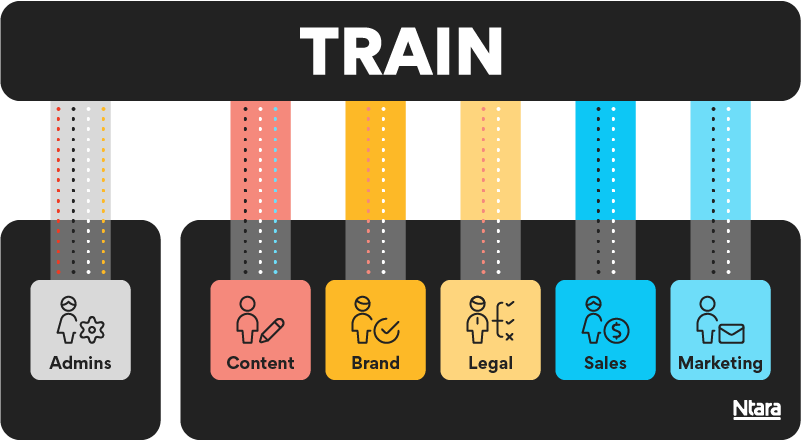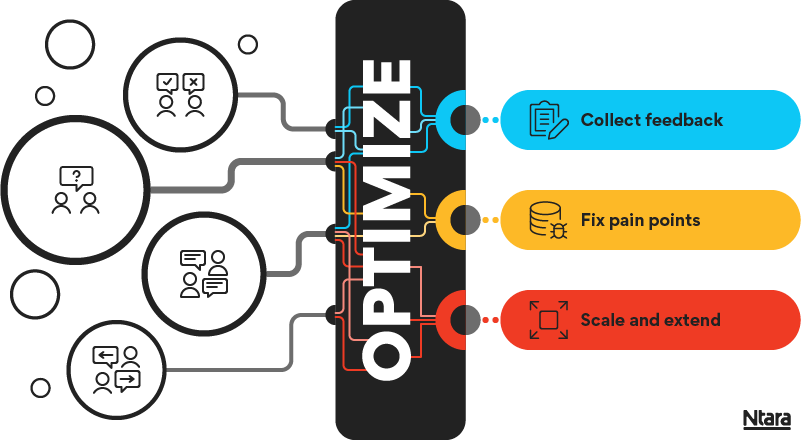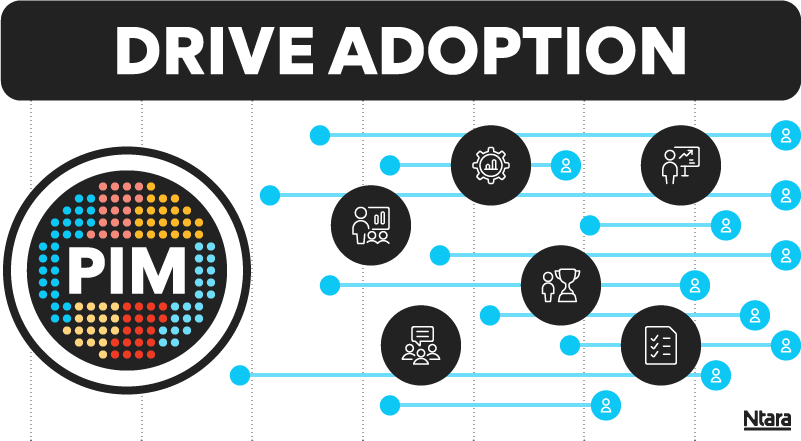Implementing a product information management (PIM) system is a milestone worth celebrating. It takes cross-functional collaboration, investment, and patience to get a platform like this off the ground. But the truth is, launch day isn’t the finish line.
If you want to unlock the full ROI of your PIM, the real work begins after go-live. That’s where change management comes in.
Effective post-implementation change management is about more than troubleshooting. It’s about building habits, optimizing workflows, and helping your team see PIM as the foundation for growth. Done right, it transforms PIM from “new software” into the single source of truth for your product content.
Here are three essential levers to pull: training, optimization, and ongoing adoption.
1. Train for today—and tomorrow
For your PIM to provide value, your PIM users must understand it. That’s why training can’t be a one-time event; it has to be a sustained program.
- Role-based learning: Administrators, content writers, product marketers, brand/legal reviewers, and sales/marketing teams all need tailored guidance.
- Formats that stick: Combine live workshops, recordings, and easy-to-reference documentation to make training engaging and repeatable.
- Onboarding baked in: Make PIM training part of new hire onboarding to avoid knowledge gaps as teams grow.

Training is about more than mechanics. Training builds confidence, consistency, and trust in the system.
2. Optimize continuously
A few months after launch, you’ll start seeing what’s working and what isn’t. That’s your chance to fine-tune.
- Collect feedback from internal and external users. How do they actually use PIM day to day?
- Fix pain points: Resolve bugs, streamline workflows, and improve the user experience.
- Scale and extend: Add new channels, expand syndication, or update approval processes to support growth.

Optimization ensures your PIM keeps pace with business needs and is effective in winning over skeptics.
3. Drive adoption with communication and culture
Adoption doesn’t just happen. It takes consistent reinforcement and leadership.
- Communicate intentionally: Share updates on new features, lessons learned, and success stories.
- Celebrate progress: Recognize SMEs, teams, and contributors who help improve the system.
- Reinforce the “why”: Remind people how PIM makes their jobs easier, improves brand consistency, and drives sales.

When adoption becomes part of your culture, PIM shifts from being just “another tool” to becoming the source of product truth that everyone in the company can trust.
The bottom line about PIM change management
Implementing a PIM system is a huge step, but sustaining its value requires ongoing change management. Without a clear plan for adoption, even the best PIM system risks becoming shelfware. That’s why change management is critical.
Training, optimization, and communication can’t be thought of as add-ons. They’re the levers that turn your investment into measurable business impact.
An effective change management plan ensures your teams not only know how to use the system but also choose to use it regularly. When adoption is strong, PIM becomes the backbone of product content operations. It drives efficiency and accelerates time-to-market—and all that fuels serious growth.
True ROI doesn’t come from implementation day. It comes from adoption sustained over time.